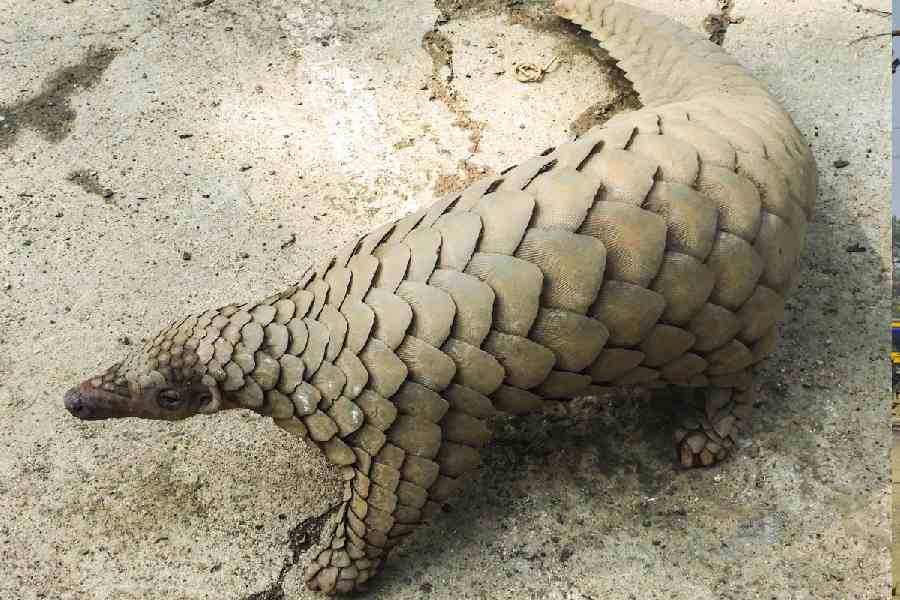 |
| Daniela Baumann talks about a car model designed at the Ulm college at the exhibition. (Aranya Sen) |
The Ulm School of Design in Germany closed down in 1968 after opening in 1953. But the far-reaching influence of this seminal institution was underscored at a conference titled Look Back, Look Forward — HfG Ulm and basic design education in India, organised by the Goethe-Institut/Max Mueller Bhavan Calcutta in collaboration with the National Institute of Design (NID) on September 28.
The conference was held along with the exhibition, Ulmer Modelle, at ICCR to mark the 50th anniversary of the founding of the college. The exhibition had fine examples of crockery, phonographic equipment and that of a car and street lights that were never manufactured.
Speakers at the conference were either “second generation” or “third generation” Ulmers and only Sudhakar Nadkarni was a student of the college. And this gave a clear perspective of how the basic design course or foundation course of Indian design schools has changed over the years.
The conference began with Daniela Baumann, a research associate of the HfG Archiv Ulm, outlining the history of the college that brushed aside the Bauhaus tradition and expected the designer not to be a “lofty artist” but one who would coordinate with a large number of specialists.
Kirti Trivedi, Industrial Design Centre, IIT Mumbai, himself a former pupil of Sudhakar Nadkarni, stressed the study of Indian design traditions instead of an unquestioning acceptance of the Ulm School model.
M.P. Ranjan, NID, Ahmedabad, announced that five new NIDs — three of them in Hyderabad, Jorhat and Bhopal — will be opened across the country.
 |
What’s giraffe fever?
Dengue: the fever of a hundred names. This is how the chief health officer of the Calcutta Corporation, Dr HM Crake, tried to define dengue in a write-up two years after a dengue epidemic struck Calcutta in 1923. Other names he had mentioned included break-bone fever, broken-wing fever, break-heart fever and giraffe-fever.
Calcutta has suffered three epidemics of dengue — in 1873, 1912 and 1923. The virulence of the 1923 epidemic was explained by Crake in The Calcutta Municipal Gazette (September 5, 1925/page 679): “Hardly a family in Calcutta escaped the epidemic of 1923 and there are certainly about 300,000 ‘ditchers’ who know all about dengue from painful personal experience”.
Calcutta Corporation started distributing leaflets to educate people about the vector-borne disease in 1923. It has become an annual ritual since. However, the tone and tenor of the text has changed over the years.
A copy of the 1923 leaflet, signed by Crake, appeared in the Calcutta Municipal Gazette dated August 9. It read:
A number of cases of dengue are occurring all over the city. Most of the cases are mild and uncomplicated, but as the conditions for its spread are very favourable at this season many cases may occur if no action is taken.
Dengue is spread by the small black mosquito with white stripes on its body and legs: the so called “tiger-mosquito”.
The tiger-mosquito breeds inside your house and compound, in reserved tanks, chaubachcha, vessels for storing water and any old tins, bottles etc. left lying about. It is particularly fond of the saucers placed under almirahs etc. for the purpose of keeping ants away, also of fire buckets in offices....
The tiger-mosquito is very active and bites freely in the day time (after 2pm). The use of cetronella oil on exposed parts of the body is recommended during the afternoon. The best protection at night is a mosquito net.
N.B. According to some authorities, mosquitoes will not bite persons who take small doses of sulphur regularly.
 |
Goddess of all things
The number of pandals is increasing for every puja. Vishwakarma puja was no exception. There was a pandal for every street corner almost, though the kite seems to have vanished from the Calcutta sky, probably hidden by the pollution.
Did an increased number of pujas mean an increase in devotion to the god of crafts and engineering? We don’t know. All we know is that it means increased confusion. As the occupants of a truck on its way to immersing the idol cried: “Bolo Vishwakarma Mai Ki, Jai! (Hail to the ‘goddess’ Vishwakarma).”











